Mark Your Calendars: The Grand Tourist 2026 Guide to Art and Design Fairs
A great design or art fair sets the tone for the year, defines the conversations, and points to where taste is headed. These are the fairs defining 2026. Save the dates.
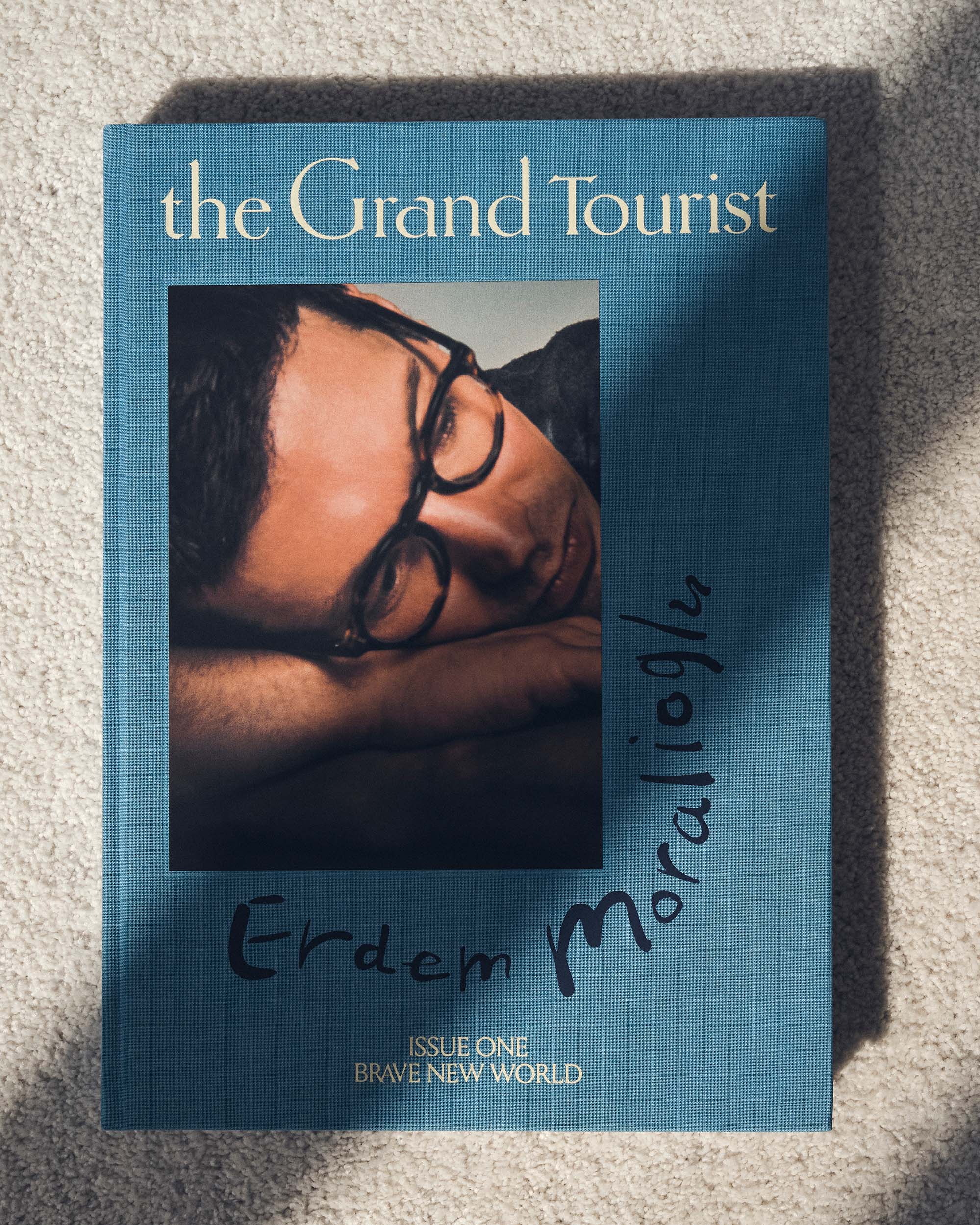
After 12 seasons of the podcast, The Grand Tourist is proud to announce its first print issue, due out in May and available for preorders online now. On this special episode, Dan shares some of the details on this mammoth 364-page tome covering the worlds of art, design, travel, and style, and speaks with the magazine’s creative director, Matthias Ernstberger, and the podcast’s illustrator-in-residence Zebedee Helm, to chat about their creative journeys and some of the incredible original features readers will find in the new deluxe, hardcover volume. You can purchase the first print issue of The Grand Tourist here.
TRANSCRIPT
Dan Rubinstein: Hi, I’m Dan Rubinstein and this is The Grand Tourist. I’ve been a design journalist for more than 20 years, and this is my personalized guided tour through the worlds of fashion, art, architecture, food, and travel, all the elements of a well lived life, but it’s not just a podcast anymore. On today’s special little episode, I’m announcing our first ever print issue of The Grand Tourist launching today for sale online at thegrandtourist.net. But let me back up. First, I started The Grand Tourist back in 2021 as a kind of creative outlet during the depths of the pandemic lockdown. Never in my wildest dreams did I think I’d be speaking to you today more than 130 episodes later this fall. I decided to take things to the next level with The Grand Tourist, not just as a podcast, but as a brand of sorts, a whole universe of creativity for every episode of the most recent season.
From Liz Diller to David Yurman, we commissioned the most wonderful portraits of our guests and converted our audio episodes into fully illustrated stories. Then adding to that, we found hundreds of pages of incredible stories from across the globe from an inside look at a Berlin museum that’s rarely visited to a photographic journey down the River Nile and other various deep conversations with artists and designers from Tunisia and South Korea to Los Angeles and Oxford. This first print issues whopping 364 pages are collected in a linen hardcover book that will be sold in select bookstores and online with three exciting covers. We printed it all in Belgium with some silky smooth paper that is heavenly to behold. It’s a real labor of love and a keepsake, I hope will grace your bookshelves and coffee tables for years to come. There are dozens of talents that took part in this incredible adventure, but today we’re going to say a quick hello to two of them. Our creative director, Matthias Ernstberger, who helped translate the purely audio universe into three dimensions. And my beloved illustrator, Zebedee Helm, who you might know from his fantastical drawings that are all over the grand on our website and Instagram account, who greatly contributed to the issue.
(MUSICAL BREAK)
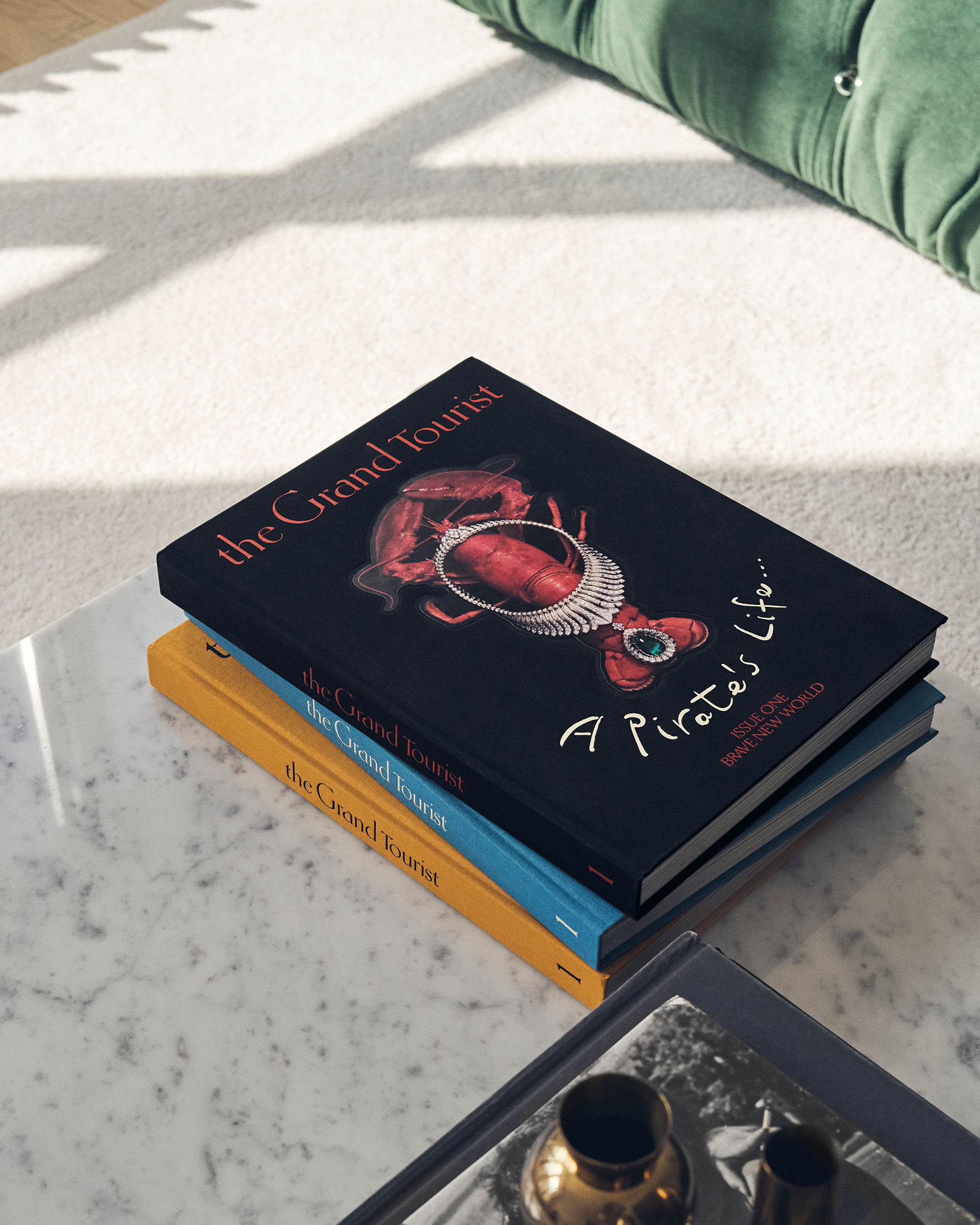
Well, thank you guys for joining me. This is obviously a very special little episode we have going here just to toast the launch of the first print issue of The Grand Tourist. So why don’t we start off and Zedi, you’ve been sort of collaborating with The Grand Tourist for a couple of years now, and can you just tell everybody a little bit about your background in an illustration and tell us everybody about yourself?
Zebedee Helm: Well, I started off in fine art and doing abstract paintings, quite cartoony, but I got more and more into the narrative angle and they became more and more satirical, and eventually at one of my exhibitions, someone recommended that I should actually send that picture off to a satirical newspaper, which I did, and they published it. So I realized that I’ve sort of quite unconsciously crossed a line and become a cartoonist. So I continued along that line for a while, which I really enjoyed because it meant that I could speak to people, which being an artist you never did. Anyway, I quite quickly got discovered by Sue k Crew, who was then the editor of House and Garden, and I was asked to become the illustrator in chief for House and Garden, which I did for about five years. And from there I got other jobs like working for Art Review, doing cartooning and illustration, but more illustration because there wasn’t so much money in cartooning.
But I always loved the satirical side of things. And then I worked for the FT for a bit doing more political stuff and animations. And in the background I was doing children’s books for children’s books for children, obviously I was doing children’s books and illustrated books for adults. And so everything was connected by a sort of humorous element. And then I got work working in, so fashion houses started approaching me, so I worked for Mes and the Row doing interesting things for ‘em. What I loved was that I was being able to access all the worlds that I was interested in because I’m full of curiosity. So yes, it’s just all generally appealed to that. And I’ve worked for Fortnam and Masons for a long time doing various things for them, including recently four enormous murals on all four floors of there, working in a restaurant in Frankfurt doing satirical portraits of famous people called Frank, a series of maps for the row. And I’m collaborating with the Albas Foundation at the moment, doing a couple of books for them.
Oh, amazing. Okay. Matthias, you and I worked together on a different magazine, what feels like years ago now. Can you share a little bit about your background and what your studio has been up to lately?
Matthias Ernstberger: Yeah, sure. Well, I grew up, as you might be able to hear from the accent, that’s never going to go away. I grew up in Bavaria in Germany, and I also studied in Germany graphic design at the State Academy of the Arts in Stuttgart. And after graduation, I got the amazing opportunity at the time to come to New York City, which I always wanted to work in, live in and work for. Stefan Zag Meister, who at the time already was a very acclaimed and well-known designer all around the world. And I stayed with him working with him for seven years, which was amazing. Great experience. We did a ton of work that a lot of the listeners might actually have seen in the past. And from there I moved on to various agencies in the city in New York, got in-house as a creative director at Coach and at David Yurman. And after I left David Yurman, I founded my own studio design studio here in the city called me and Friends. We are working still in the same field, I would say in the design world, architecture, art, hospitality, fashion, sort of all over a luxury lifestyle, I would say, even though I’m not a big fan of that umbrella term, but it encapsulates it the best, I think.
And how do you describe the magazine now to someone? Because people listening now have just, this is the first time they’re hearing about it.
ME: Yes. Well, I mean, as you said, it’s clearly a big part of the magazine is the podcast in print visualizing like bringing the podcast to life in a visual sense, but then also extending it with features of, for example, Tina Lechner, who is a visual artist from Vienna who is not a part of the podcast series per se, but her work is stunning and really interesting, her photographic work. So including that basically broadening the horizon of the podcast itself, I think was a really exciting endeavor.
So just to describe the magazine itself, it’s a hardcover book. There are three different covers. It’s a linen hard cover. So we have three different types of what’s called, I guess you could say, tipped in images. So glossy images sort of pressed into the linen with some lovely hand handwork from Zebedee.
ME: Hand calligraphy!
ZH: That’s what it is!

And so yeah, everybody in current, the season that we’re just wrapping now, as people listen to this, all of those people are in the magazine and then we’ll have another 200 plus pages of extra content just from the sort of universe of The Grand Tourist and s like to see are sort of hand lettering in the issue and on the covers, we also get a little return of what we are sort of describing as little Dan’s, those little animated versions of me all over the place in some stories. Do you think of the Illustrator version as a different me from the real me? Or is this little guy now have his own sort of personality?
ZH: Well, he’s not quite as handsome as you are, obviously.
True, true. He has better skin. He has better skin, put it that way.
ZH: He’s got lovely skin and very good ears. But he was, he’s a little icon, so he’s a little person with a life of his own, but he does represent you. And I was amazed that you let me do him for about five seasons. So I was very sad, obviously, to see him retired. So hugely relieved that he’s making a comeback this time in print. And I think he’s probably sillier than you are, and I think he probably, because he gets up to all sorts of hijinks, so he pushes boundaries, not that you don’t, obviously with your interviews, but I think he’s physically probably takes more risks than you do.
ZH: That’s he teeters on the edge of a lot of pieces of furniture.
Well, listen, he better be more appreciative. I could erase him at every time I want, but yes, no, I often describe my podcast voice as being slightly different and a little bit more chipper or sort of a very kind of made for broadcast, much more ebullient version of me. So I guess the illustrated version kind of makes sense if you listen to the podcast. As you do before you create any little illustrated version of me and these fun little collaboration stories we have in the magazine.
ZH: Well, he could have a spinoff series on television.
He really could. Yeah, why not a Saturday morning cartoon sort of teaching kids about drinking champagne and buying furniture.
ZH: He’ll get into trouble though with his little microphone, which could be mistaken or something else.
No, you never know. Maybe that’s the source of my power, kind of like man sword. I have this microphone.
ZH: He has a very powerful ambiguity about it.
And Matthias, from a sort of a photographic point of view, which story would you say you’re looking forward to in terms of sharing with everybody out there in the book or maybe a few stories that you want to point out?
ME: Oh yeah, I have a few stories that I really got invested in. I had like to point out Lee Mary Manning’s collaboration where she took portraits, visited DS+R here in New York City, took portraits of Liz Diller and took also lovely photos of the architecture studio and did some of her assemblages. She’s like a fine artist, and I’m a personal friend of her for a while. And I was happy seeing her career evolve over the years. And she shows with a Canada Gallery here in New York City. So I was really super happy to collaborate with her. Very excited about that. And I feel the outcome is excellent. I really love that work. And another great collaboration I think was with Grant Cornett for David Yurman. The great thing about Grant, I worked with him many, many times in the past, and the great thing about Grant is that he is really an excellent photographer all around. He takes amazing portraits, but also great still life images and great lifestyle images. And that all came together in this feature about David and Sybil Yurman, the founders of David Yurman, the jewelry brand, which I also worked for as a creative director for many, many years. So revisiting that story, shooting the David Yurman and Sybil Yurman with him and the jewelry pieces, the original jewelry pieces, how David Yurman became what David Yurman became, going back into the archive and shooting all of those original welded brass pieces was really amazing. I love those two stories.
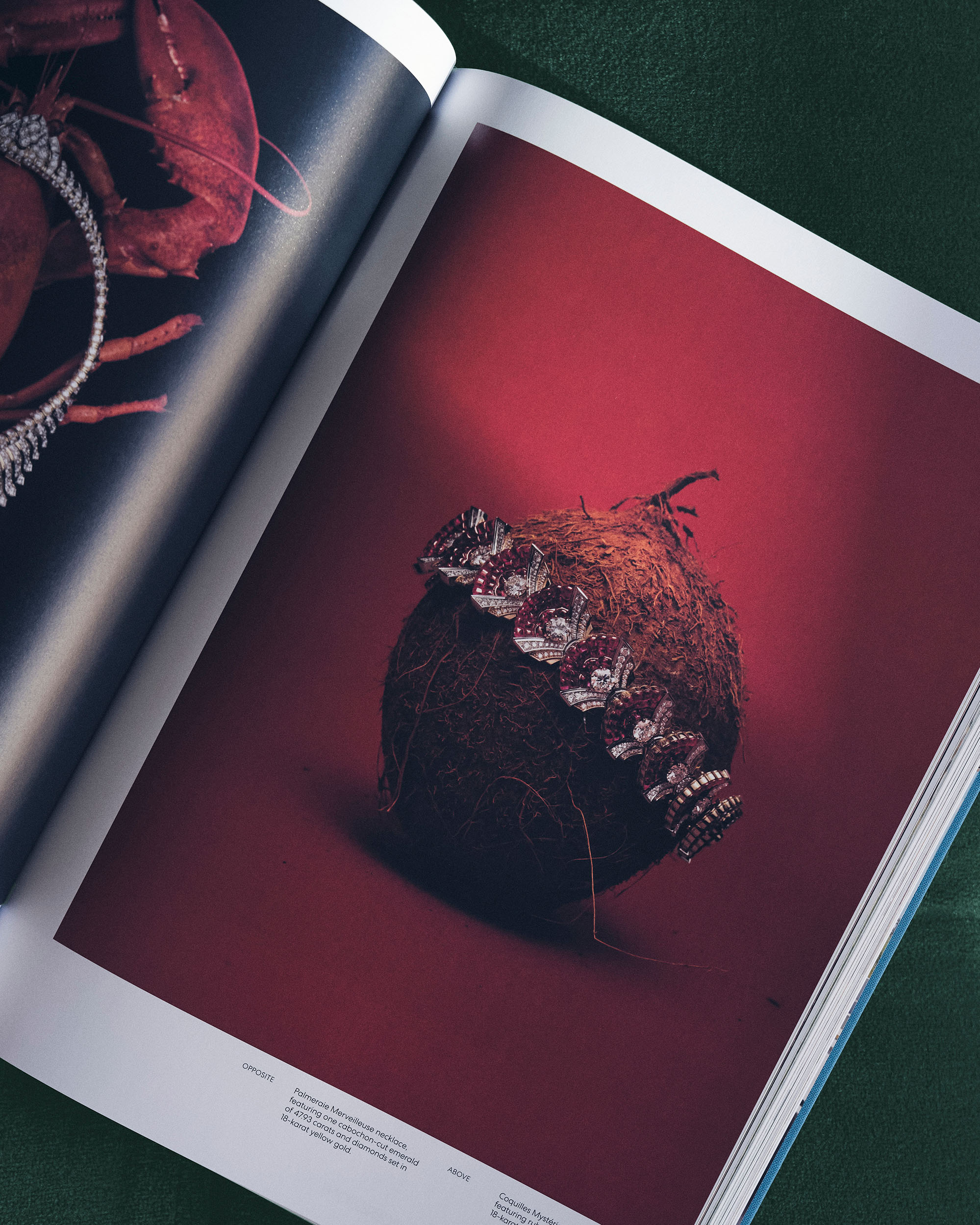
And, Matthias, what do you think makes a good magazine in 2025?
ME: Well, over the last couple of years, I think we saw this development in magazines where obviously magazines have been declining over the last 10, 15 years, unfortunately. And I think what makes a great magazine right now, or what will also make a magazine desirable is I think the collectability of the magazine, making it an item or more of a book that you really want to keep and that you really want to possess in a way. And I think with the three different covers that we did with that production value of the inset printed images on the cover with a hand typography that is all stamped in different foil stamp colors and everything that makes it really more than a magazine, it makes it more like an object.
ZH: Yeah, I rather like Matthias, I can no longer see the difference really between a magazine and a book. In the old days, they were totally ephemeral and you’d read them and you’d put them in the recycling. But now I very rarely find myself actually disposing of any magazine. They’re all kept as if they were books, and I think the prices of them reflects that as well. And the fact that they also have adverts, which is so wonderfully triggering to look back at an old magazine and the adverts which have this incredible nostalgic power, and you don’t get that from a book, so they’re like a book, but with extra sort of punches of nostalgia, which I love.
Thank you to my guests, Zebedee and Matthias and truly to every loyal listener of The Grand Tourist for making this episode happen. The editor of The Grand Tourist is Stan Hall. To keep this going, if you truly enjoy everything that The Grand Tourist has to offer, then we do hope you’ll consider buying a copy of our first ever print issue available now online at thegrandtourist.net, and we’ll be back with more audio episodes for season 13 in May. See you in print!

A great design or art fair sets the tone for the year, defines the conversations, and points to where taste is headed. These are the fairs defining 2026. Save the dates.
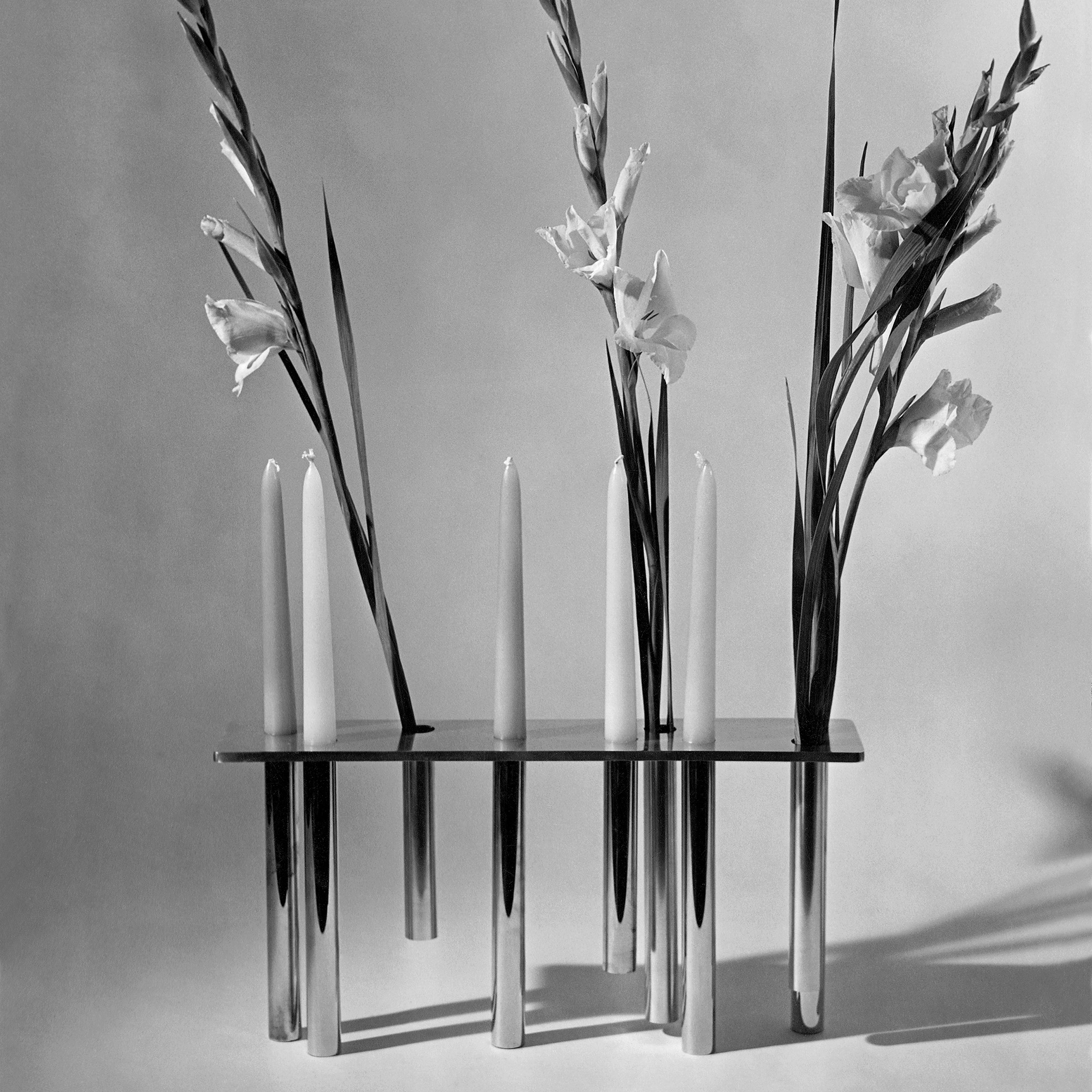
We assembled our favorite design objects for the people on your list that have everything, including taste.
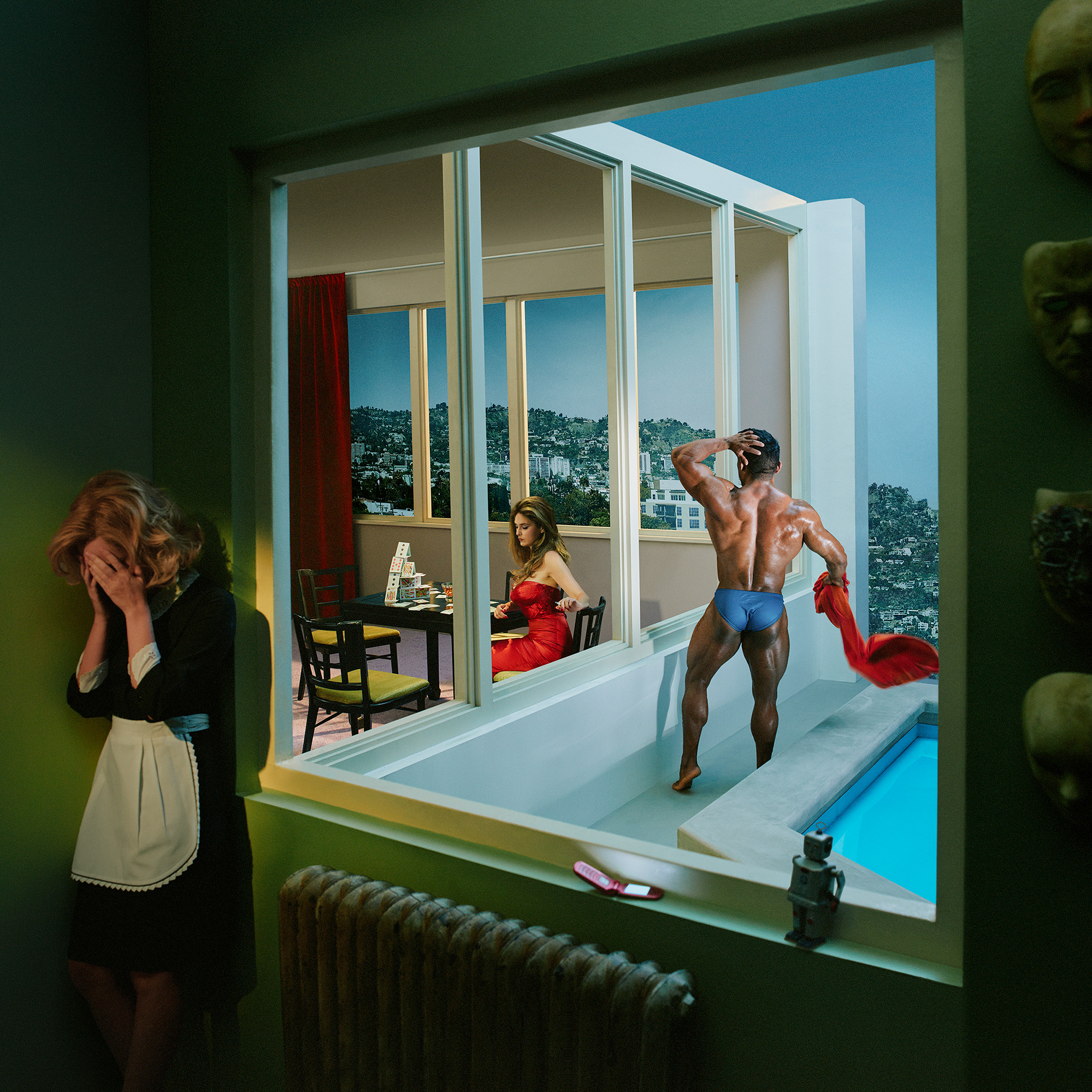
We checked in with our former podcast guests who will be inching through Miami traffic, unveiling new works, signing books and revealing new projects this year.